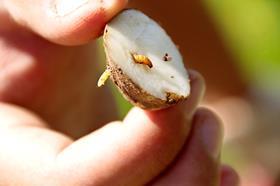
Fera has launched a new R&D model to support continued research, innovation and knowledge transfer across the agri-food sector.
Enigma has been established to find end-to-end solutions to pertinent industry challenges.The first project to launch, which will be co-funded by industry partners, will investigate wireworm, a pest that affects potatoes and carrots, and increasingly other crops such as cereals, field beans, sugar beet, onions and maize.
Speaking at the launch, Guy Thallon, strategic business development manager at Fera, said Enigma was an exciting initiative for the business at a time of great change for agriculture. “There is no getting away from the fact that the pressure on global food systems is intensifying,' he explained. 'The global population continues to increase, and the risks associated with a changing climate become ever more pressing. Our food production systems must therefore be robust to withstand this challenge.
“However, there are still huge gaps in R&D across the agri-food sector and this is what Fera wants to help address through Enigma projects,” he adds.
Thallon stressed that knowledge exchange between Fera scientists and industry partners is a crucial element of Enigma to strengthen the connection between science and practical implementation.
“Collaboration is key to the success of these projects. At Fera we’re fortunate enough to have access to a team that deliver world-class science and have a strong alliance with leading organisations internationally that can deliver innovation.
“It’s this knowledge, experience and expertise that we want to share with industry partners we work with to help build sustainable food production systems that are truly fit for the future,” he added.
Challenge of wireworm
Larissa Collins, principal scientist of Enigma one and entomology team leader, said of the first project: 'The pattern of wireworm damage is changing, however the industry is yet to understand why and how these damage patterns are altering.
“Fera has identified that R&D is required to understand in greater detail the lifecycle of wireworm to enable producers to successfully use Integrated Pest Management (IPM) techniques to control the pest. Further research into the identification of wireworm species is also required.
“We are therefore putting a call out to aligned industry partners who would be interested in co-funding this project or future Enigma projects to start moving the needle in vital research areas.'



